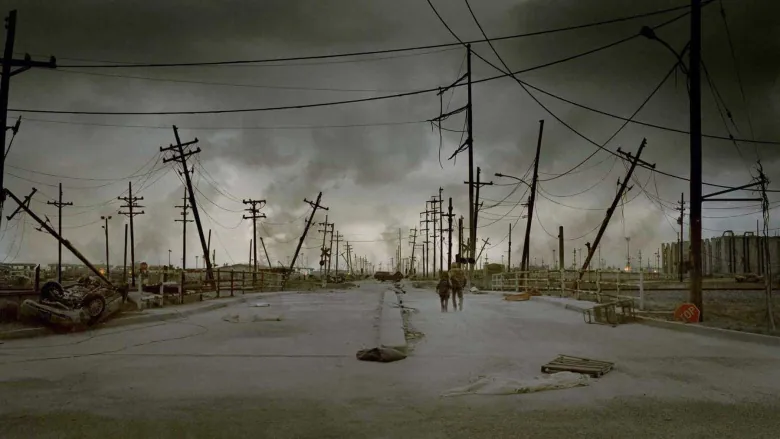-
Posts
2,809 -
Joined
-
Last visited
Content Type
Profiles
Blogs
Forums
American Weather
Media Demo
Store
Gallery
Everything posted by USCG RS
-
A Rose by any other name is but a Rose
-
The day that happens is the day I issue an emergency alert to the United States for an imminent disaster.
-
The saving grace to this winter is heating oil. In October/November the Energy and Emergency Management community were preparing for the worst, including an inability of the average person to afford it while also being concerned about the need for rolling electric blackouts due to a lack of supply. Thankfully, the rather mild winter has negated this threat for the most part. Yeah.. I don't think Central Suffolk and east should sleep on this I would argue in some ways yes and here's why: our area, LI especially, is directly abutting the water. All snow for us is essentially thread the needle, even in a great pattern (of course there are always exceptions). The WAR forces warm air towards the island without much to subdue it. Ie, southerly winds or pushing an LP too close to LI/SE CT/NYC is a recipe for disaster because of our proximity to the water. There is, of course, a flip side to this. The WAR causes a plethora of baroclynicity and this can really benefit the area when the gradient is in the right location. Humans are still more intuitive than machines when they listen to themselves. For now, anyway Ya know... The USSR used to seed and play with salt for wx purposes...
-
That would be essentially a beautiful spring day.
-
This is America. Expert means nothing to anyone anymore.. er... Maybe they never did?
-
100%. This reminds me of a storm that was to go OTS about 20 years (Maybe 23?) and clipped from about Rt. 112 East with some pretty appreciable snows.
-
Honestly, a pattern like this -assuming it flips- leads to 1 heck of a storm many times. Over abundance of warm ocean waters fuels a storm that eventually throws A LOT of moisture into a cold landmass. I know it is elementary, but some ppl need reminding we are one really strong storm away from making up most -if not all- of our seasonal average....
-
-
I wrote this elsewhere. But believe it's also relevant here: The physics of the realm seem to be becoming increasingly too complicated for models to understand, the farther into the future it goes. Ie, the models are beginning to have to compute so many increasing variables, it's simply overpowering them. It makes sense to me from a chaos point of view. The more chaos in a system, the more volatile and less predictable the outcomes become. Models are seeing increasing potential energy tied in with increasing background variables. But I digress, this is not necessarily the place for this discussion. Yet I bring this up for two reasons: 1) Agreeing that long range modeling is grasping at straws lately. 2) I believe the physics of this realm tends to portray themselves early in the season. Ie, there's a reason we always predict a pattern change and rarely see it. An object in motion stays in motion until acted upon by another force. So -in the case of what I am advocating here- the seasons are sufficient to change the patterns as natural forces act to change the patterns. Yet once a season begins, that pattern tends to lock in as it take tremendous power/force to alter a seasonal pattern. Of course that does not mean that it cannot happen, however, it is much harder to break into a new pattern than most computer models, ppl, etc give it credit for. As an aside, this does not mean I am canceling winter on Jan 2. That - In my opinion- would be foolish. Just laying out some thoughts.
-
Happy new year!
-
-

Historic Christmas Lake Effect Blizzard
USCG RS replied to BuffaloWeather's topic in Upstate New York/Pennsylvania
Long Island is getting out of hand regarding expenses and my brother owns a company in the Buffalo area. Plus, I tend to think Buffalo is going to be 1 of the next major up and coming cities in the US. Regarding work, I am remote in all I do - thankfully; so all I need is High Speed Internet. Though I think Buffalo needs some help regarding their Emergency Management We do not mind driving, however, we do not want to be completely rural either - if that makes sense. I would personally prefer a place with a garage. Other than that, we regularly use the gym and we tend to eat either pasture raised or organic foods - so I am not sure if certain areas would be easier to shop (we do order alot online for delivery - so not the worst thing if nothing close). -

Historic Christmas Lake Effect Blizzard
USCG RS replied to BuffaloWeather's topic in Upstate New York/Pennsylvania
OT Question - The wife and I are looking to potentially move to the area. Any recommendations? We would likely start in an Apt to get the lay of the land -

Historic Christmas Lake Effect Blizzard
USCG RS replied to BuffaloWeather's topic in Upstate New York/Pennsylvania
I wonder how the County Exec is characterizing an EMS Delay, because that is opening the County up to a pretty significant lawsuit. Obviously, we do not have the facts surrounding it, but... I am surprised he would characterize it that way. -
@psv88 Sorry to hear about your inflatable. If it's any consolation, Harrows is running their normal post-Christmas deals and the one in Melville still has quite the selection of Inflatables left.
-
So I was pretty young during the 90s, but I remember when 3-6" was called for and Long Island ground to a halt. Perhaps we're heading into these doldrums again? To those who are older/more knowledgeable, are we beginning to repeat these types of patterns?
-

Historic Christmas Lake Effect Blizzard
USCG RS replied to BuffaloWeather's topic in Upstate New York/Pennsylvania
@BuffaloWeatherWow & Great work. I hope you and the family and - everyone here from Buffalo and the surrounding region- are staying safe -
You had several factors 1) Exceedingly strong winds. These winds crippled the power grid. This lead many to be without heat compounding a very dangerous situation 2) Extremely heavy snow w/ whiteout conditions leading to roads that immediately became impassible. The city went from 2 inches of rain to blinding snow in a very short period of time. Unprecedented. 3) Bone chilling cold. We're not talking 25-30 degrees and heavy snow. We're talking single digits and exceedingly dangerous wind chills (Hurricane force winds) 4) Emergency Response grinded to a halt. The snow was so bad that reportedly every fire truck in Buffalo was stranded. This was reportedly the first time in history that the Buffalo FD could not respond to calls. For several hours a complete stop on response was forced to be implemented. 5) People being people and not realizing the danger. This led to people becoming stranded and/or injured. See point 4. 6) Cars stranded became tombs. Running the heat lead to CO dangers while leaving it not running led to death by extreme cold. There are more factors, but these are the most glaring which I can see
-
Merry Christmas!
-
I remember that all too vividly. I do not think I slept more than 20-25 Hours total in that 14 day stretch...
-
That's funny. Wife and I are literally considering buffalo rn.
-

Prediction of the first snowfall for the NYC area.
USCG RS replied to MJO812's topic in New York City Metro
That is dark... Dark star. -










